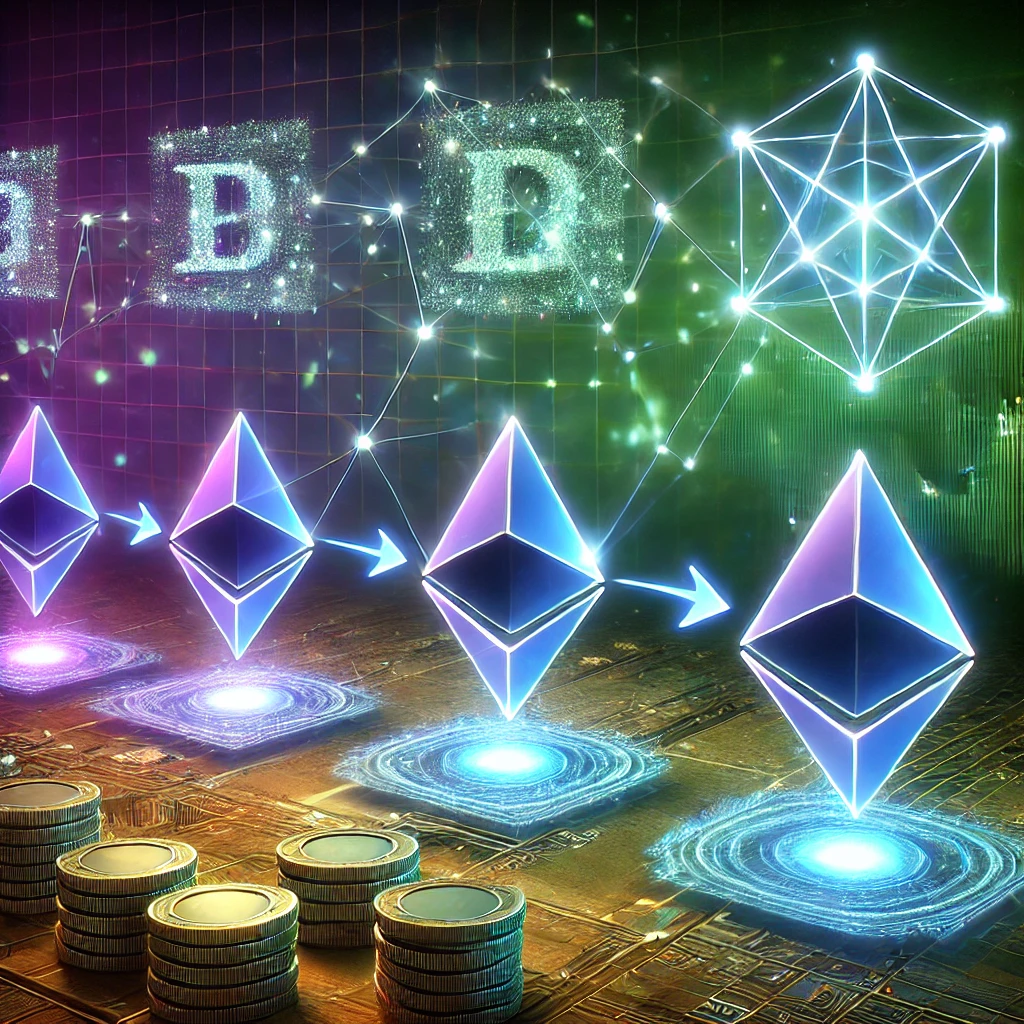
Estimated reading time: 7 minutes
In digital currencies, blockchain technology stands out for its robust security features. A key player in this security protocol is the nonce, a cryptographic element that ensures the integrity and security of transactions within the blockchain network.
Table of contents
The Role of Nonce in Blockchain Security
At its core, the nonce (number used once) is a unique cryptographic value assigned to each block in a blockchain. This element is important in preventing replay attacks and securing the network against unauthorized alterations. By incorporating a distinct nonce into each block, blockchain technology achieves a level of security that is foundational to its trustworthiness and reliability.
Miners, the participants responsible for validating and securing transactions, rely on the nonce during the consensus mechanism process. This process involves solving complex mathematical challenges to append new blocks to the chain. The nonce is crucial here, as miners iterate through countless nonce values to find the one that meets the network’s specific conditions, thereby confirming transactions and strengthening the network’s security.
Understanding Blockchain Mining and Proof of Work
Blockchain networks, including Bitcoin and Ethereum, depend on a critical method known as proof of work to maintain security and accuracy. In this method, miners use a special number, or nonce, adjusting it along with the data of transactions and the hash from the previous block to produce a new hash that meets the network’s requirements. This computational effort acts as a powerful deterrent against tampering, making it extremely difficult to alter transaction records due to the enormous amount of computational power needed. In the case of Bitcoin, the goal for miners is to find a nonce that results in a hash with a certain number of leading zeros, showcasing the intense effort put into safeguarding the network.
At the heart of blockchain technology lies mining, a competitive activity where miners race to find the right nonce that adheres to the network’s consensus rules. Whether it’s a 32-bit or 64-bit nonce, it’s selected at random and processed cryptographically along with the previous block’s hash and transaction data. Miners use hashing algorithms such as SHA-256 or Keccak-256 to create a unique hash that meets or exceeds the network’s difficulty target. This involves numerous attempts, requiring adjustments to the nonce and repeated computations until the correct hash is found. Highlighting the vast amount of computational work and energy used, this process is essential for ensuring the network’s security and its decentralized nature.
Boosting Security with Cryptographic Techniques
The role of the nonce goes beyond its use in mining, playing a key part in enhancing blockchain security. With each nonce used only once, it’s vital for the proof-of-work system, helping to confirm transactions and add them securely to the blockchain. This use helps prevent replay attacks by giving each transaction or block a unique identifier, making it much harder for fraudsters to replicate old transactions. This strengthens the network’s defenses against interference.
Mining’s dependency on the nonce also boosts the robustness of the blockchain by encouraging competition among miners and leading to more computing power being devoted to the network. This process not only generates new blocks but also strengthens the network’s defense mechanisms. Nonces are instrumental in maintaining the consensus within the blockchain, helping to distinguish between legitimate and fraudulent transactions and ensuring the integrity of the ledger.
Nonces play a pivotal role in managing transactions, particularly on platforms such as Ethereum. They serve as a key defense mechanism against replay attacks and ensure the orderly progression of transactions. By assigning a unique nonce to every transaction, the network can verify its legitimacy and maintain the correct order. This process effectively blocks any attempts at altering or copying transactions. The vital function of nonces underscores their significance in the expansive realm of blockchain technology.
Also read: How to Earn Passive Income with Peer-to-peer Lending
Diverse Uses of Nonce Beyond Blockchain Environments
While nonce is widely recognized for its role in blockchain security, its utility extends into various other fields, highlighting its versatility and importance.
Enhancing Network Security: Nonce is a key tool in bolstering network security measures against replay attacks, aiding in maintaining data integrity. By generating a unique note for every session, it is possible to reduce the risk of unauthorized data reuse.
Strengthening Cryptographic Protocols: Within authentication and key exchange, nonce is indispensable in curbing replay attacks and guaranteeing the freshness of messages. Its integration into cryptographic formulas significantly boosts system defense mechanisms.
Facilitating Randomness: In domains such as gaming, simulations, and cryptographic processes, nonce is a critical source of unpredictability. Producing nonce values from sources that cannot be anticipated ensures the injection of randomness into these systems, enhancing fairness and security.
Improving Access Control: For managing user access, nonce is instrumental in creating one-time tokens that authenticate and authorize users. This approach to generating nonce-based tokens is crucial for secure and controlled access to digital resources.
Advancing Digital Signatures: In the digital signature domain, nonce values play a crucial role in preventing the reuse of signatures, thereby elevating security. Every transaction or message gets a unique identifier when we use nonce values to create signatures. This step enhances the security of digital interactions. It ensures no two activities share the same identifier, making each distinct and secure.
Navigating the Challenges and Innovations in Nonce Technology
Nonce technology is pivotal in blockchain operations, especially within the proof-of-work consensus framework. Yet, it encounters several obstacles while also promising room for significant innovations:
Energy and Resource Demands: Creating nonces in the proof-of-work context is resource-intensive. This process demands vast computational power, leading to concerns over energy use and environmental impact.
Network Growth and Scalability: The expansion of blockchain networks raises questions about the scalability of nonce-dependent consensus methods. As transactions increase, the pressure on network capacity intensifies, potentially slowing down the processing speed.
Vulnerability to Attacks: Despite its role in bolstering security by preventing issues like double spending, nonce technology is not immune to threats. It faces challenges from brute force and collision attacks, underscoring the need for enhanced security measures.
Anticipated Technological Advances: The field is actively seeking solutions to these challenges, with research focused on improving blockchain’s efficiency. Future directions include exploring alternative consensus models, such as proof-of-stake, which may lower energy demands and enhance network scalability.
Exploring New Algorithms: The development of innovative algorithms for nonce generation is underway, aiming to strike a balance between security, operational efficiency, and scalability. These efforts hold the potential to transform blockchain technology, leading to more environmentally friendly and scalable solutions.
Conclusion
Nonce, short for “number used once,” is crucial for security and smooth operation. It is attached to each block in the mining process as a unique identifier, confirming its validity. This process allows miners to generate new blocks, upholding the blockchain ledger’s integrity.
Its role goes beyond simple identification. Nonce prevents harmful actions like double spending and maintains the blockchain’s data integrity. Its cryptographic use strengthens transaction immutability, increasing trust and transparency across blockchain systems.
Additionally, nonce is central to the proof-of-work consensus mechanism, where miners vie to append new blocks to the blockchain. This competitive aspect secures the network and encourages ongoing participation and support from the community.
Nonce is foundational to blockchain security, enabling secure, trustless exchanges and preserving the decentralized ledger’s integrity. As blockchain technology advances, the strategic application of nonce remains critical in defending against threats and boosting network efficiency.
Read more: How to Use Index Funds and ETFs for Passive Crypto Income
Frequently Asked Questions (FAQs)
In blockchain technology, a nonce represents a one-time-use, arbitrary number critical for block identification and verification. It is pivotal in the mining process, enabling miners to compete in generating new blocks by finding the appropriate nonce.
For cryptocurrency mining, nonce is indispensable. It lies at the heart of transaction validation and new block formation. Miners conduct a rigorous trial-and-error search for the correct nonce, with the successful miner receiving cryptocurrency rewards.
Nonce also holds the potential for enhancing blockchain scalability. Improving nonce algorithms can make mining faster and easier. It cuts down the time and computer power needed to make new blocks. This improvement can significantly boost the scalability of blockchain systems.
Regarding consensus algorithms like proof-of-work (PoW), nonce is fundamental. It supports the race among miners to find the right nonce. This race helps everyone agree on which transactions are valid. It also helps add new blocks to the chain. This competition is essential for upholding the blockchain’s integrity and reliability.
Discover more from The African Crypto
Subscribe to get the latest posts sent to your email.










